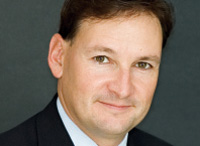 |
Over the next 20 years, we’re going to see the largest-ever patient population growth. By 2020, one out of three people will be over age 60. This has never happened in the history of the US, nor is it likely to again. The diseases most prevalent will include AMD, glaucoma, ocular surface disease, diabetes and cataracts, with the latter likely at the very top of that list. We currently perform about 3.3 million cataract surgeries annually in the US. That could double in the next 15 years. What’s most amazing is that this trend begins in 2017! But as the ranks of our cataract patients grow, we’re not likely to see a commensurate increase in the number of surgeons. In fact, this number may be even decrease in next 10 or 15 years. In the end, ophthalmology’s appetite for scope of practice battles will be neutralized by simple math.With an insufficient supply of surgeons, comanagement is going to be essential. Ophthalmology practices are going to hire optometrists to see patients postoperatively or independent optometry will seize this opportunity for the future.
Yes, embracing medical management entails complex challenges such as credentialing, insurance verification, managing vision insurance with medical insurance, coding, billing, collecting and accounts receivable of medical insurance. These can all be mastered in the long term and outsourced in the short term. Companies like Optometric Medical Solutions, Practice Resource Management, PECAA, Vision Source, OD Lean, Prima, FYidoctors (in Canada), to name a few, can help with various business principles in medical eye care. These companies have solved these challenges for numerous practitioners at less cost than hiring full-time staff, limiting any excuses for optometry to not be involved in medical eye care right now.
Better for Everyone
As gatekeepers, ODs are better positioned to manage medical patients and truly drive the comanagement relationship. For example, an OD who has provided 20 years of care for a patient prior to cataracts will know the type of person they’re dealing with. Is the patient a ‘type-A’ personality? If so, the patient may not do well with a premium IOL. Have they previously failed monovision? Which patients did fine tolerating their mild astigmatism masked by contact lenses, and which absolutely required correction? The latter may be better suited to toric IOLs. We also have better, closer relationships to understand the patient’s specific needs. This would be very difficult for a surgeon to ascertain in a single pre-op assessment. So, it’s in the best interests of patient care for optometry to be proactive in comanagement.Comanagement is not only our greatest growth area over the next 15 to 17 years, it’s also imperative. Doctors who don’t get on board may lose patients. More than 65% of patients do research on the Internet before to seeing a doctor when a certain condition, such as cataracts, is present. These patients then ask their doctor about their symptoms—so, if you can answer their questions, you will always be their eye doctor.
Thus, educational opportunities for new IOLs, surgical advances such as femtosecond lasers and perioperative care are important for us to embrace, to best serve our patients. Now is the time to enhance this part of your practice, as we position for one of the greatest growth areas of any medical condition for the next two decades. Optometric practices need to ready themselves now; those who do are likely to be most successful. ODs involved in the medical model tend to have incomes in the upper 5% of the profession. These practitioners are not choosing medical at the expense of their dispensary; rather, they allow patients to have all their eye care needs met at one center, and typically have dispensaries that do just as well, or better. Your medical and traditional optical businesses can work synergistically—just as optometrists and ophthalmologists are increasingly learning to do. n

